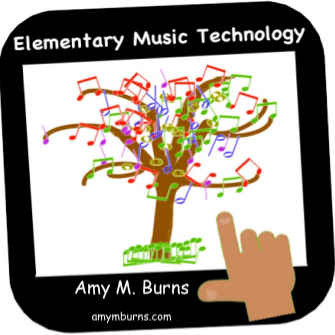5 Quick Takeaways from "Creating and Composing with Younger Elementary Students"
On October 23, I was invited by NJ Kodály Organization to present a workshop titled, “Creating and Composing with Younger Elementary Students". The workshop was recorded and the recording will be accessed by those who registered. If you could not make the workshop, here were 5 quick takeaways from “Creating and Composing with Younger Elementary Students".
#1: Wheelofnames
https://wheelofnames.com/ is a free site where you can input names so that the wheel can randomly choose your students for activities. Just for that alone, this is a great and intuitive tool to use daily in your classroom. However, you can also add images to the wheel and save the wheels so that they have accessible individual links. I have created wheels that include rhythm patterns in certain meters, rhythm and melodic patterns from certain songs, arioso wheels, as well as wheels with my students’ names. I can also send the link to students and use a screen recording tool to record the wheel spinning for around 40 seconds so that I can add that movie to my learning management systems (LMS) like Seesaw or Google Classrooms. This way, the students do not have to leave a LMS to access the wheel. This site is so valuable for a quick, accessible tool to use in various ways daily in your classroom.
#2: The Rhythm Randomizer
https://www.rhythmrandomizer.com/ is a wonderful tool to use for SGO assessments as you can set it up to randomize rhythm patterns according to what you want the students to read and perform. Plus, you can use this tool to create quick rhythm patterns that you can screenshot and present whether digitally or printed out on paper.
#3: Seesaw makes it intuitive to collect audio and video from your students through their activities.
By using Seesaw’s (https://app.seesaw.e) activities, you can create an activity, retrieval practice, assessment, etc, where the students log in (through their email or through a QR code-you can choose), access your activity, and use the video or audio tool to record themselves. This can all work in the free version. If you have the paid version, you can set up certain skills or goals for the students to achieve in the activity. You can then grade their skills/goals through your own rubric that they cannot see. When it comes time to grade them or write their report cards, you can open Seesaw and review how you graded them at the time.
#4 Making Composition Age-Appropriate


When I showcased various ways to compose from drag and drop activities to writing activities, my main point was to find ways to connect with the student’s creativity. If you hope to have the students create and compose, you first have to connect to the students. If their music is one style only, then we need to begin with their music and use it in the classroom so that students can relate to what you are teaching. If your students love beatboxing, then use https://www.incredibox.com/ to give them a creative tool to make music. If your students are inquisitive mathematicians, then give them Groove Pizza (https://apps.musedlab.org/groovepizza/?museid=E5mWGAh7s&) to create music while working with math concepts.
#5 Flat + Kodály = Greatness


Many thanks to Jennifer Jenkins of the Midnight Music Community (https://midnightmusic.com.au/) who convinced me to try Flat (https://flat.io) after years of using Noteflight (https://www.noteflight.com). I found out how quickly one can create manipulatives with solfege noteheads and Curwen hand signs.
Check out this episode on my YouTube channel!
Click here (https://www.youtube.com/watch?v=SSHA-kRSpkQ) to see the episode that accompanies this post.





